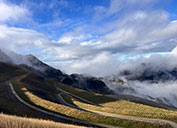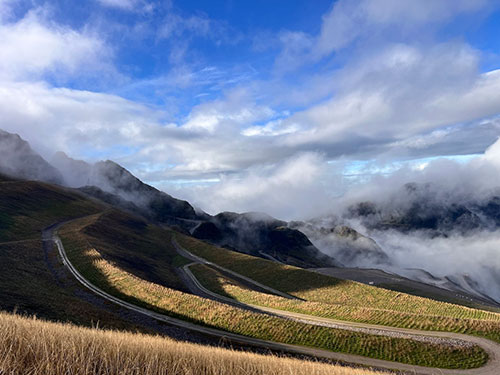Remediation Work is Turning Grasberg Pit Stockpiles Back to Nature

 August 15, 2025 - PT Freeport Indonesia’s Grasberg open pit stockpiles are being transformed through a massive ecological restoration project.
August 15, 2025 - PT Freeport Indonesia’s Grasberg open pit stockpiles are being transformed through a massive ecological restoration project.
Restoration work began in 2014, well before active open pit mining ceased and was taken underground in 2020. The steep stockpiles surrounding the pit on three sides are being reshaped to reflect the area’s natural topography. Crews are stabilizing the terrain, managing water flows, covering the slopes with limestone and replanting native vegetation to support long-term environmental recovery.
In all, about 2,500 acres are being turned back to nature as part of the project that will bring down the height and ease the grade to help ensure stability and proper drainage, said Made Mahayasa, Director, Mine Planning and Closure-PTFI. Work crews now totaling about 300 people have completed more than half of the restoration, with reclamation done on almost 1,300 acres.
The most difficult work focuses on an area known as Wanagon, a steep cliff at the base of a kilometer-high stockpile that is being recontoured. About 100 million tons of material will be moved to stabilize the Wanagon area and cap other parts of the stockpiles so the reclamation can proceed.
Other parts of the stockpiles not as steep as the Wanagon need less grading work. Those sections are being covered with 5 meters (about 16 feet) of limestone from the area, which prevents reactions with the underlying material. Native grasses are planted on top of the limestone. The stockpiles are run-of-mine waste material removed when the pit was in operation to reach the ore underneath.
The pit itself is not part of the remediation work because of active underground mining below it.
Complete restoration
“Everything that has been disturbed by mining activity except the pit will be reshaped and revegetated,” Mahayasa said. “This isn’t just any planting project. It’s a carefully orchestrated ecological revival, featuring a curated selection of native plant species from the Grasberg region.
“As each hectare is seeded and planted, we’re not only stabilizing the land — we’re inviting back biodiversity, improving water retention, and setting the stage for long-term ecological resilience. It’s a process that blends science, sustainability and a little bit of patience.”
There are encouraging signs the reclamation work is returning the ecology of the area to a more natural condition, said Gesang Setyadi, Vice President, Environmental/Sustainable Development-PTFI, who oversees the project’s environmental aspects. Most notably, there are more frequent sightings of the New Guinea Singing Dogs, a unique species that until recently was thought to be extinct. When the pit was operating, the dogs rarely were seen in the area, but their numbers appear to be growing now operations there have ceased and restoration work has progressed.
The native grass Deschampsia klossii is the primary vegetation planted initially. It is harvested from surrounding mountains and grown in a local nursery for replanting on the stockpiles. After that has taken hold, additional species of brush are planted to create a more diverse and natural ecosystem.
There are challenges. The area is situated in alpine and sub-alpine climates, so vegetation does not grow quickly as it does in the tropical forests below. The terrain is steep, and the weather is cold and rainy.
Measuring success
Biodiversity of both plants and animals is monitored closely in accordance with government-issued permits and other company commitments. Success is gauged by how closely the reclaimed areas resemble the undisturbed environments of the surrounding mountains.
“We try to make the area to be quite similar to the natural ecosystem,” Setyadi said.
The stabilization on the Wanagon stockpile is expected to be finished in 2029. Other work to restore the rest of the stockpiles to a natural condition will continue until expected completion in 2041.
Beyond the reshaping, capping and replanting the stockpiles, buildings, roads and other infrastructure are being removed. Two crushers have been demolished and two more will be torn down this year.

Photos (top to bottom): The Grasberg stockpile remediation project already is showing signs of success as native wildlife and plants return to the area; After the old stockpiles are covered with limestone, workers install native grasses to restore the mountaintop to a more natural habitat; About 300 workers are engaged in environmental restoration work at the Grasberg open pit stockpiles.



 BACK
BACK
SOCIAL
RECOGNITION